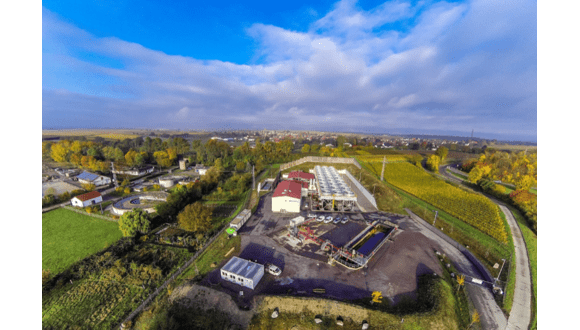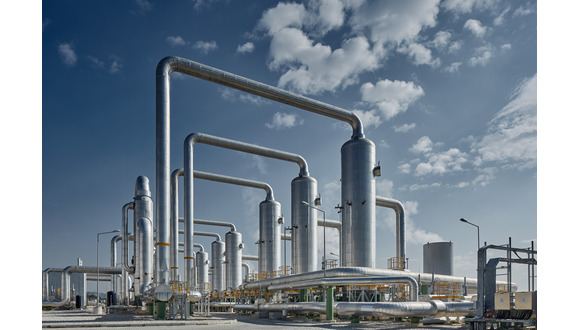Tue, 08 October, 2024
The GeoSmart Project, funded by Horizon 2020, has been working to meet the challenges of geothermal energy production by providing more flexibility for it to function as a fully controllable and reliable energy source.
We spoke with Philippe Dumas, Secretary General, EGEC find out more about the aims of the project and the benefits they will bring to industry…
Can you start by introducing yourself and letting us know how you are involved in the GeoSmart Project?
EGEC is the European Geothermal Energy Council (EGEC), a not-for-profit organisation promoting all aspects of the geothermal industry. Founded in 1998, its objective is to facilitate awareness and expansion of geothermal applications across Europe by shaping policy, improving investment conditions and steering research. It has over 200 members from 30 countries, ranging from developers to equipment manufacturers, energy providers, national associations, consultants, research centres, geological surveys, government agencies, departments and public authorities. This allows EGEC to represent the entire geothermal sector.
In the GeoSmart project, we supported the consortium for monitoring energy policies having an impact on geothermal and about flexible power generation. With project results, we provided recommendations on policy and financial support schemes, leading to the new adoption of the Electricity Market EC regulation in 2023.
As part of the EU's continued commitment to sustainable energy, the European Electricity Market Design (EMD) has called on member states to support geothermal electricity. This support comes at a crucial time, as geothermal energy was once again identified in 2023 as the best baseload power source, achieving a load factor exceeding 80%. Geothermal systems can now ramp up or down between 100% and 20% power output in just 15 seconds, providing unmatched flexibility in balancing fluctuating energy demands. Moreover, new technologies developed by the GeoSmart project have facilitated further deployment of geothermal power and heat plants to generate flexible power.

Geothermal energy has been described as ‘always on’ – what does this mean and what problems does this status cause?
The main advantage of geothermal power is its base load capability. In contrast to other volatile renewables, geothermal power plants are dispatchable and can produce around 8,000 hours per year. In 2023, as for the last 110 years, geothermal powerplants achieved the highest load factor of all electricity sources!
By accessing the steam or heated water near the Earth’s surface, geothermal plants have a continuous source of energy and tend to operate for most hours of the year. The average capacity factor of geothermal plants is around 85%, higher than all other renewables. The majority of geothermal power plants in Europe have a capacity factor higher than 90%, with some operating close to 100% of the year. Geothermal power plants have the capacity to replace fossil fuel assets today supplying base load electricity, for maintaining grid stability and ensuring a security of electricity supply with local sources. Developing geothermal base load powerplants would allow for the saving of extra costs for the distribution and transmission of electrical grids.
How did the GeoSmart project look to address these issues?
The GeoSmart project has developed new solutions to make geothermal plants even more flexible. Geothermal electrical plants can provide more flexible generation in the energy system and then allow to reduce additional electricity grid infrastructures.
Through the GeoSmart analysis of these challenges, the project results offer strategies for enhancing the deployment of geothermal energy in Europe, particularly in scenarios where it substitutes part of the existing wind and solar capacity. A technical mapping of the energy technologies, in particular the Organic Rankine Cycle (ORC) and the Kalina Cycle, is provided, considering the operability of these systems for flexible power generation. On the basis of parametric studies using system-scale modelling, the report defines the performance range of these technologies under varying operational conditions, revealing critical insights into the efficiency variations of a reference configuration operating in off-design situations. The GeoSmart report also provides insights into the integration of geothermal energy into the EU’s electricity grid while considering a range of scenarios that project its impact on the EU energy mix through 2030 and 2040. The information provided is complemented by industry inputs collected during validation workshops that have been carried out every year since 2021.
Geothermal energy, with its ability to meet both baseload and flexible energy needs, offers a major opportunity to reduce grid infrastructure costs requirements across the EU by more than 10%. This potential is supported by a vision to deploy 250 GW of geothermal capacity across Europe by 2040. Such an expansion would not only contribute to the EU's decarbonisation goals, but also enhance the local security of electricity supply in 242 regions within the EU and 16 regions in EFTA countries.

The project also aimed to improve efficiencies, how was this achieved and what are the benefits of this for the geothermal industry?
The project has successfully developed technologies, such as the GeoSmart flexible power plants, to become highly adaptable energy providers while maintaining baseload power sources.
Geothermal is an affordable solution for the energy transition, saving system costs for both infrastructure and storage.
To decarbonise our economy in Europe by 2050, the electricity sector must be fully decarbonised and then be able to contribute to decarbonise part of the transport sector, and the heating and cooling sectors.
With an increased consumption of electricity, the electricity transmission and distribution grids will be key of the future energy system. The regions of the EU have different characteristics in terms of renewable energy mix and load patterns, so the European transmission and distribution systems will be required to be integrated at regional levels with integrated energy systems.
New investments are needed to ensure grid stability management and for new infrastructures for demand side management.
The EU institutions recommend doubling investment in the electricity grid to EUR 55 billion per year and to increase the budget for building clean generation capacity to EUR 75 billion per year, to meet increasing demand for electricity and achieve the climate objectives. In this modelling and scenario, solutions to mitigate these costs for electrical grid infrastructure have not all been fully assessed.
Contrary to some other types of base-load power plants, geothermal plants are also flexible and reliable, i.e. available under any circumstances. Thanks to these features, geothermal technologies could therefore positively contribute to stabilising the electricity grid.
Developing geothermal technologies would lead to large costs savings for the power grid infrastructure: about 10% to 20% costs saving, with a target of 250 GWs of geothermal energy by 2040 in electricity; heating and cooling (district heating and cooling systems, networked geothermal and standalone geothermal heat pumps); for use in public, residential and commercial buildings; agriculture; electricity generation, transport and manufacturing sectors; and with underground thermal storage offers by geothermal.
In the framework of the transition towards a low-carbon energy system, the integration of renewable energy sources (RES) requires a comprehensive approach and the development of supportive and adequate infrastructure. Due to its capacity to provide stable baseload power, geothermal energy stands out among the various RES. However, the achievement of its full potential requires addressing several technological, economic, and regulatory barriers. The EU’s objective to decarbonise its energy system by 2050 will require the development of diversified renewable energy portfolios integrating the consistent deployment of wind and solar power in the region of the last decades. These energy sources pose significant challenges to the energy system due to their variability and related additional costs to energy storage and grid stability. Geothermal energy’s ability to have continuous generation capacity can complement these intermittent sources and reduce overall system costs.
Geothermal power plants have the capacity to replace fossil fuel assets today supplying base load electricity, for maintaining a grid stability and ensuring security of electricity supply with local sources. Developing geothermal base load powerplants would allow to save extra costs for the distribution and transmission of electrical grids.
What were the final outcomes of the project, and what is next for Geo-Smart?
Traditionally, geothermal power plants have been built to operate continuously at maximum output (baseload). However, they can also be designed to be dispatchable, meaning capable of responding to system operators’ needs.
A geothermal power plant can be used in partial load operation and, especially with new binary technology, can quickly ramp their output up and down on demand. Even changes in the range of 30 to 100% in 15 seconds could be achieved with proper management of turbine and by-pass valves, as has already been implemented according to the requirements of German legislation.
The GeoSmart project has developed new solutions to make geothermal plants even more flexible. Geothermal electrical plants can provide more flexible generation in the energy system and reduce additional electricity grid infrastructures.
The proper incorporation of RES into the energy system of the European Union is still incomplete and geothermal energy, with its provision of continuous base load electricity and heat, is distinctively important in this process. Differently, from these variable RES, geothermal energy is in a position to deliver electricity at all times and therefore acts as a very good supplement for the variable renewable sources.
One of the major observations is that, although the capital costs of developing geothermal resources are high due to drilling and exploration, the geothermal potential is economically favourable since the operational life of the project is also long and the operating costs are normally low. The substitution of wind and solar capacity with geothermal energy can lead to significant cost savings, due to the reduced need for energy storage systems, lower transmission and distribution costs, and a decreased reliance on fossil fuel-based backup power. Furthermore, supportive grid infrastructures are essential for fully leveraging geothermal energy’s potential as well as investment in smart grids, enhanced interconnections, and advanced digital technologies.
New generation of geothermal powerplants have to look at GeoSmart flexibility options to provide the solutions for the security of electricity supply, with a clean and local power which allows an affordable energy transition.
The Geo-Smart project has received funding from the European Union's Horizon 2020 research and innovation programme. Grant agreement 818576